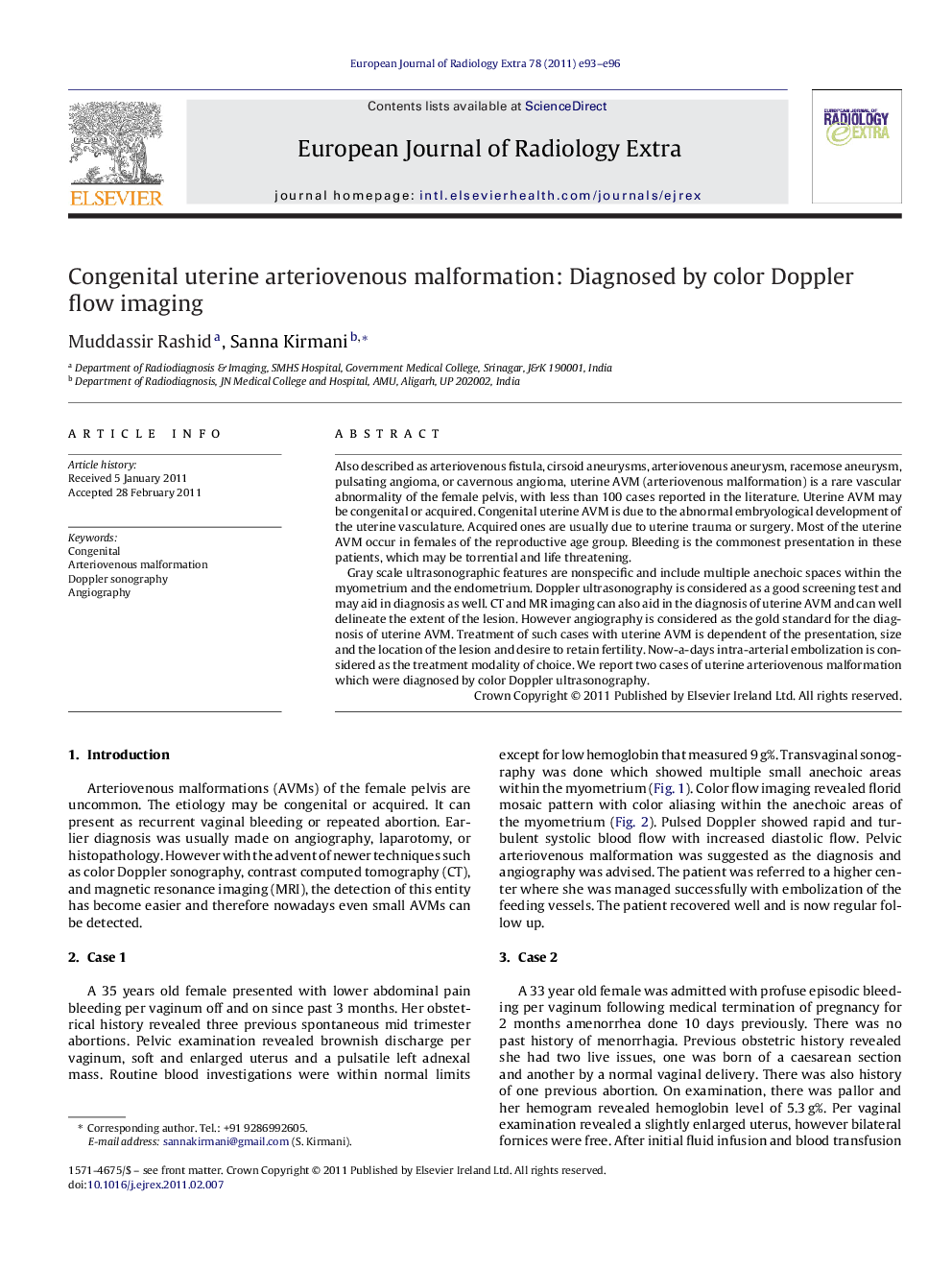| Article ID | Journal | Published Year | Pages | File Type |
|---|---|---|---|---|
| 4228892 | European Journal of Radiology Extra | 2011 | 4 Pages |
Also described as arteriovenous fistula, cirsoid aneurysms, arteriovenous aneurysm, racemose aneurysm, pulsating angioma, or cavernous angioma, uterine AVM (arteriovenous malformation) is a rare vascular abnormality of the female pelvis, with less than 100 cases reported in the literature. Uterine AVM may be congenital or acquired. Congenital uterine AVM is due to the abnormal embryological development of the uterine vasculature. Acquired ones are usually due to uterine trauma or surgery. Most of the uterine AVM occur in females of the reproductive age group. Bleeding is the commonest presentation in these patients, which may be torrential and life threatening.Gray scale ultrasonographic features are nonspecific and include multiple anechoic spaces within the myometrium and the endometrium. Doppler ultrasonography is considered as a good screening test and may aid in diagnosis as well. CT and MR imaging can also aid in the diagnosis of uterine AVM and can well delineate the extent of the lesion. However angiography is considered as the gold standard for the diagnosis of uterine AVM. Treatment of such cases with uterine AVM is dependent of the presentation, size and the location of the lesion and desire to retain fertility. Now-a-days intra-arterial embolization is considered as the treatment modality of choice. We report two cases of uterine arteriovenous malformation which were diagnosed by color Doppler ultrasonography.
